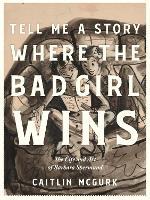Tell Me a Story Where the Bad Girl Wins doubles as an official biography and coffee table art collection honoring the life and art of pioneering cartoonist Barbara Shermund, an unheralded early master of magazine cartooning whose career spanned the heyday of American magazines from the 1920s-1960s. Her sharp wit and loose style boldly tapped the zeitgeist of first-wave feminism with vivid characters that were alive and astute. Shermund’s women spoke their minds about sex, marriage, and society; smoked cigarettes and drank; and poked fun at everything in an era when it was not common to see young women doing so. Shermund left behind a body of work that was ahead of its time and remains insightful, witty, relevant, and contemporary. As one of the first women cartoonists to work for The New Yorker the year of its launch in 1925, she created nine covers and more than 600 cartoons for the magazine, in addition to countless spot illustrations, giving the nascent publication its unique visual brand. Shermund later became a mainstay at Esquire; contributed to Life, Colliers, Judge, and more; had a syndicated newspaper cartoon published by King Features; and illustrated a variety of books. In 1950, Shermund was among the first three women to be accepted as a member of the male-dominated National Cartoonist Society. A compelling facet of Shermund’s work is her frequent nods to queer audiences, which appeared in her work more than that of any of her contemporary New Yorker cartoonists. There are indications in her personal files that she also may have been queer, including love letters and other personal archives that McGurk has unearthed. Readers will discover Shermund’s unique and vibrant life and art and gain an understanding of how women’s place in the history of cartooning has been controlled and sublimated by greater societal and cultural allowances. Through close readings, archival research, reproductions of original art, correspondence and photographs, this volume uncovers and celebrates a trailblazing female magazine cartoonist, and rightfully places her in the canon of cartoon art history.

Tell me a story where the bad girl wins : the life and art of Barbara Shermund
ISBN: 9798875000041
Format: Hardback
Publisher: Fantagraphics
Origin: US
Release Date: December, 2024


